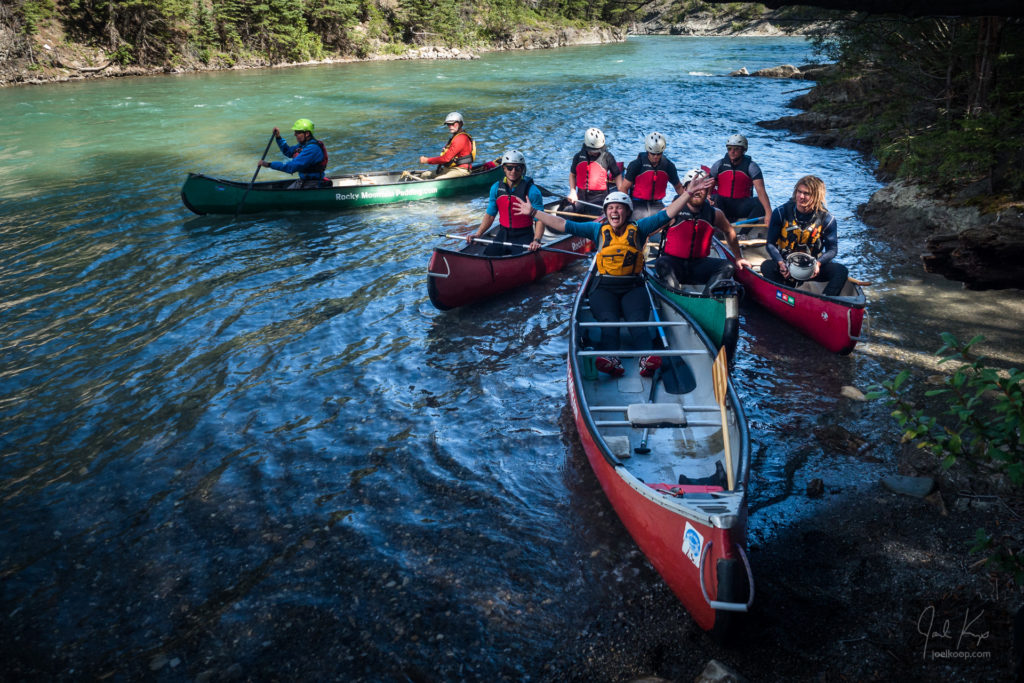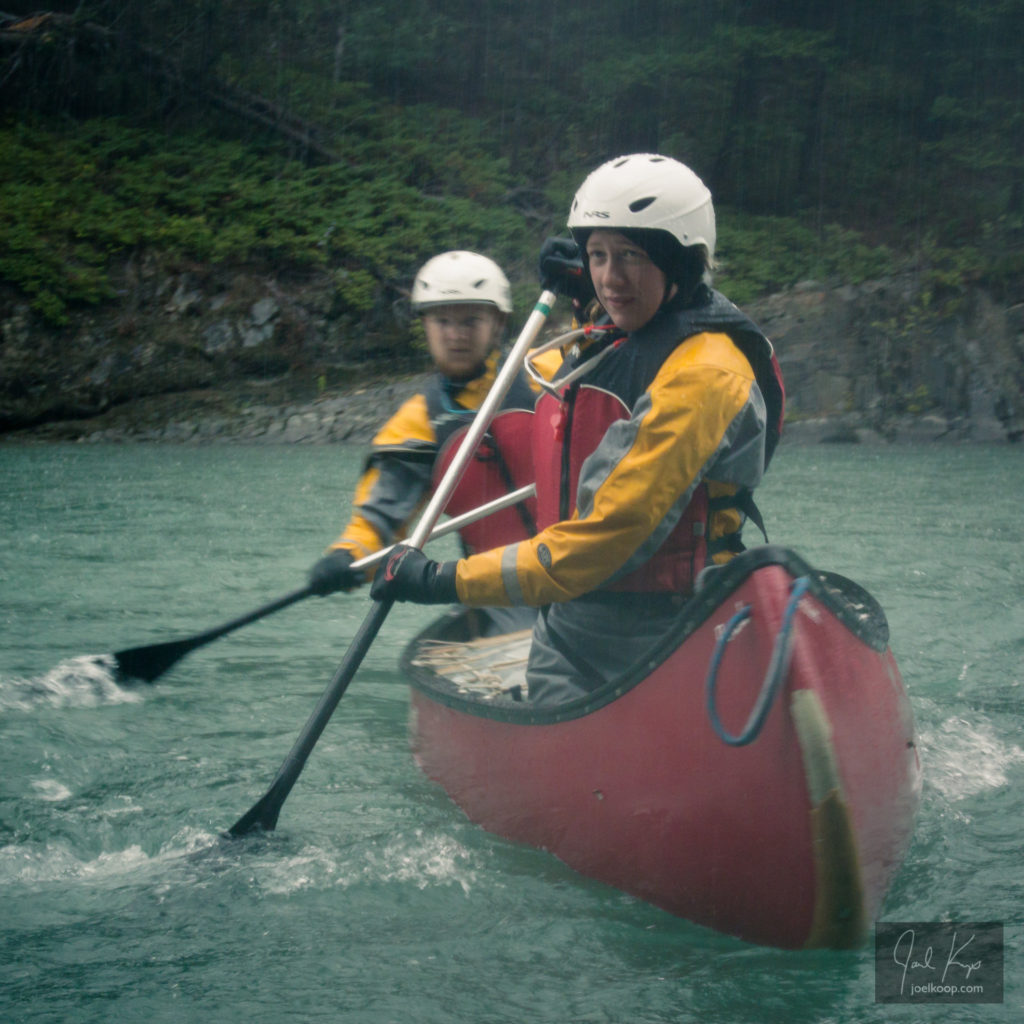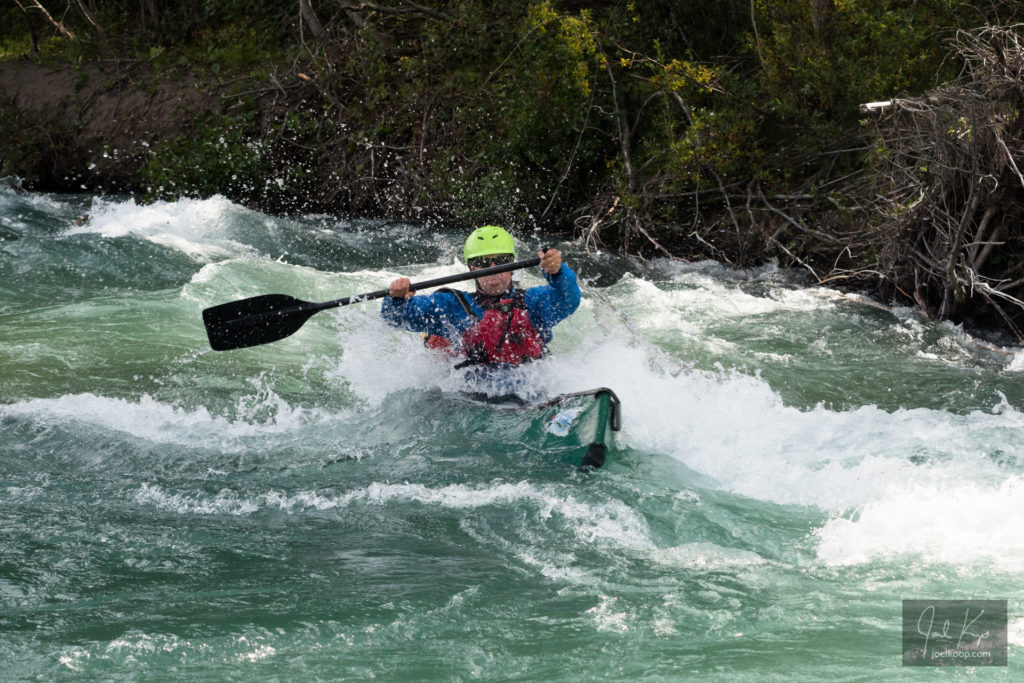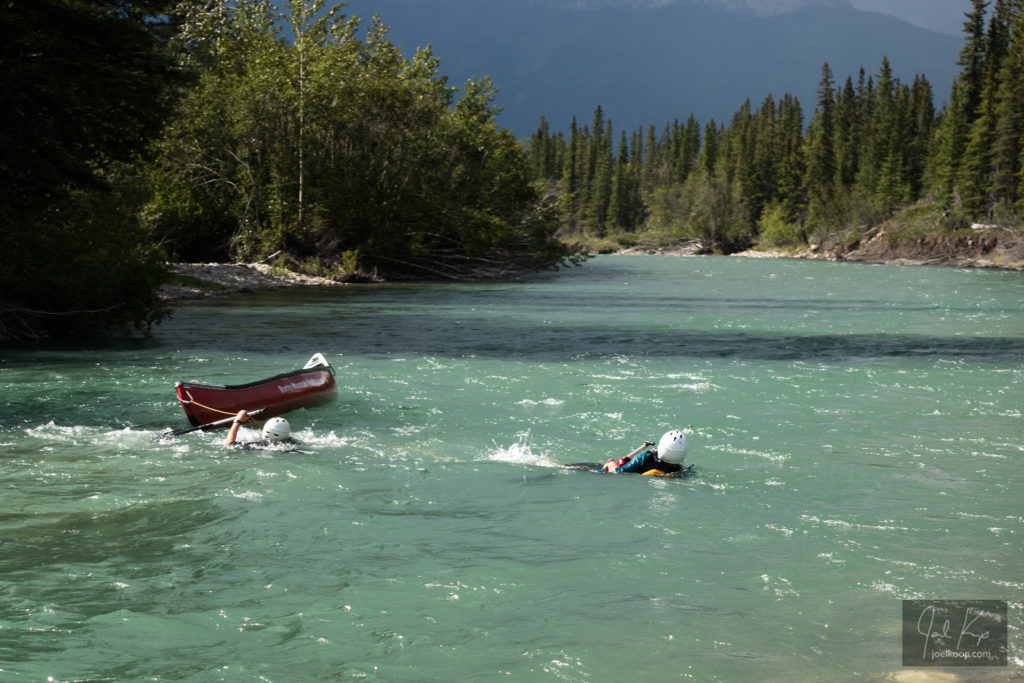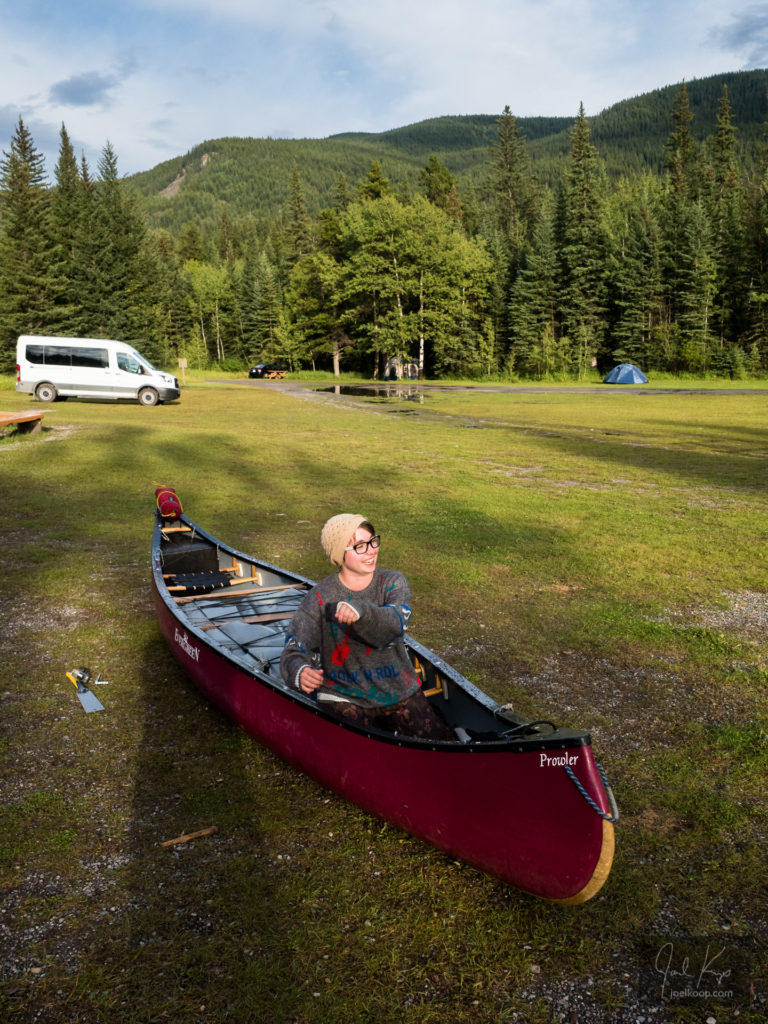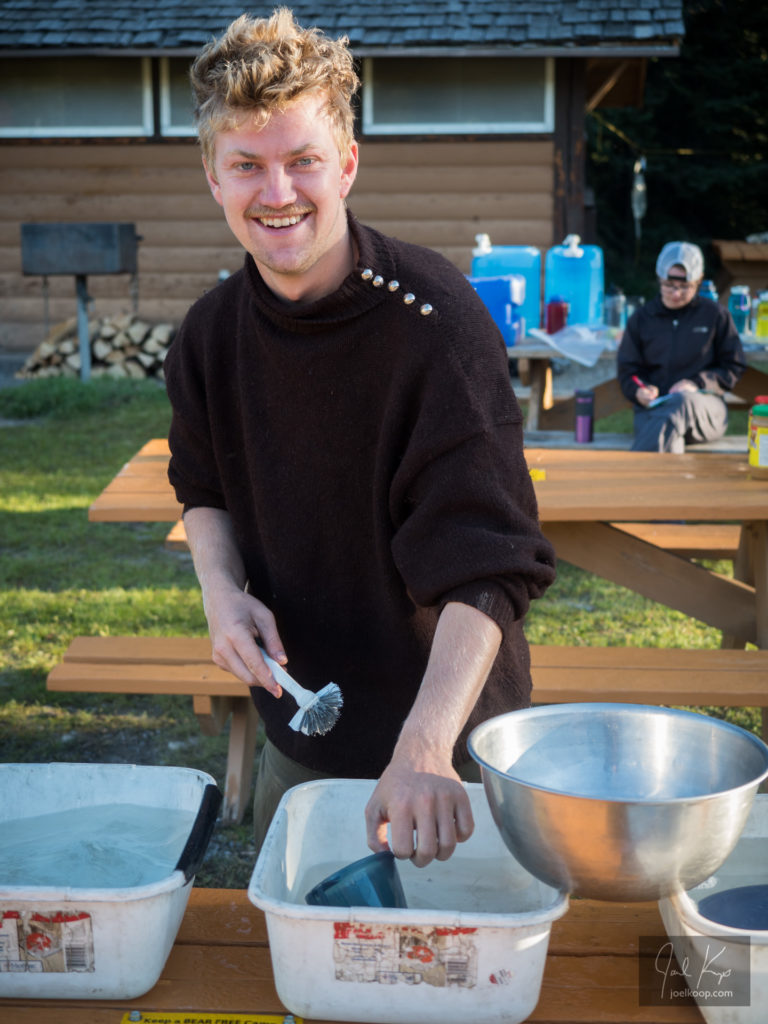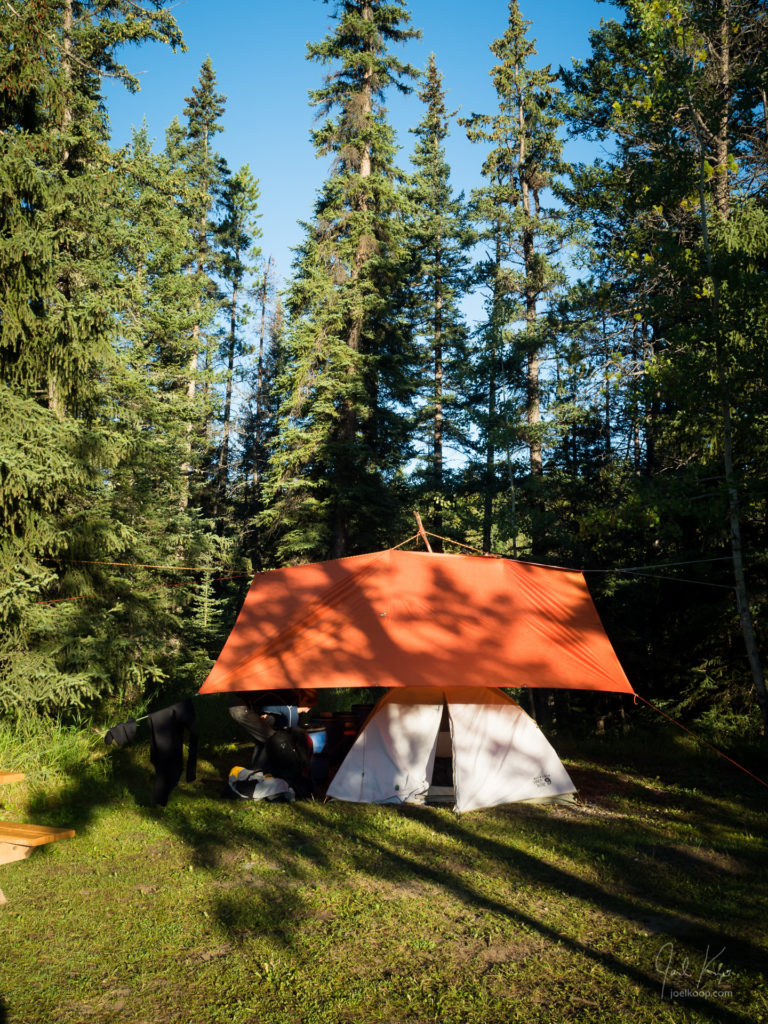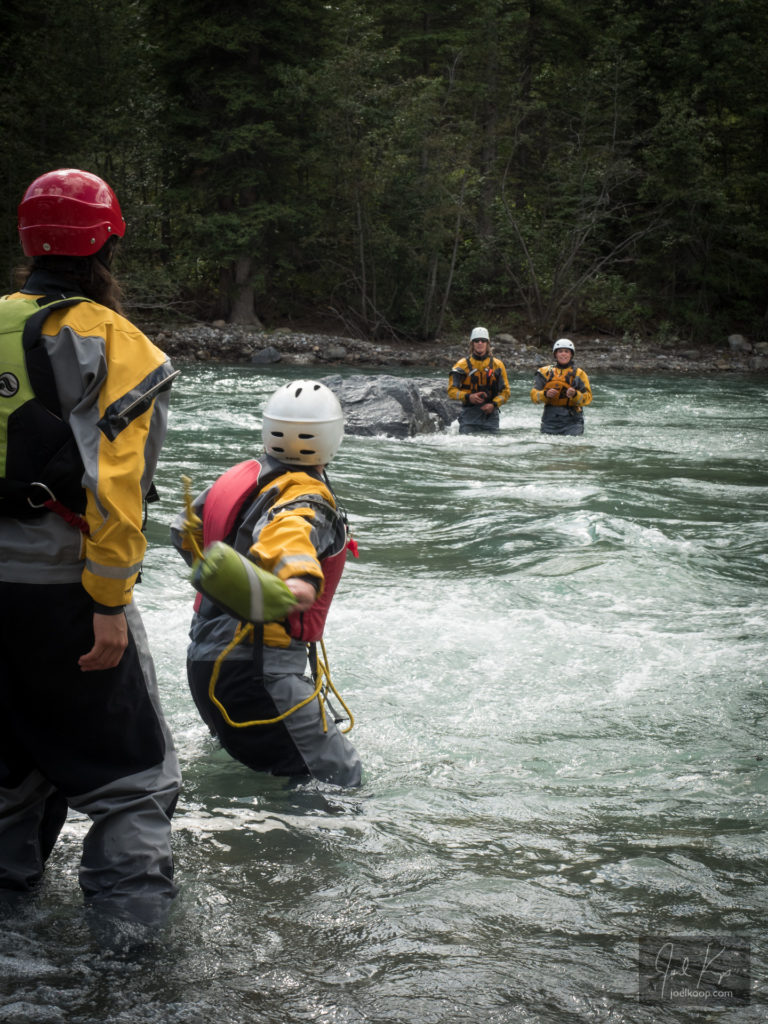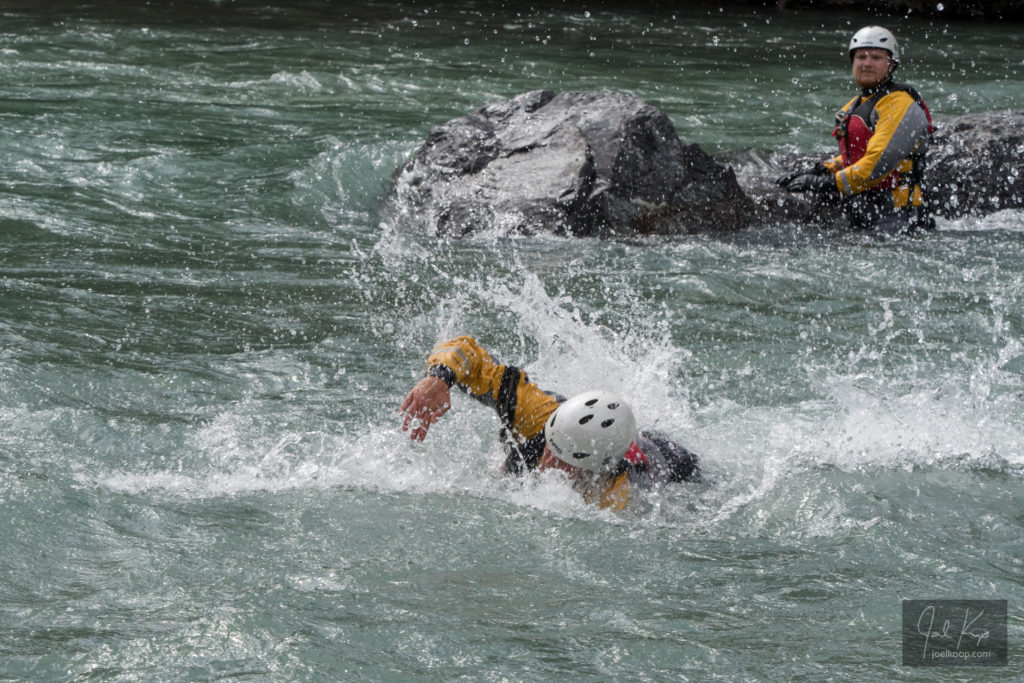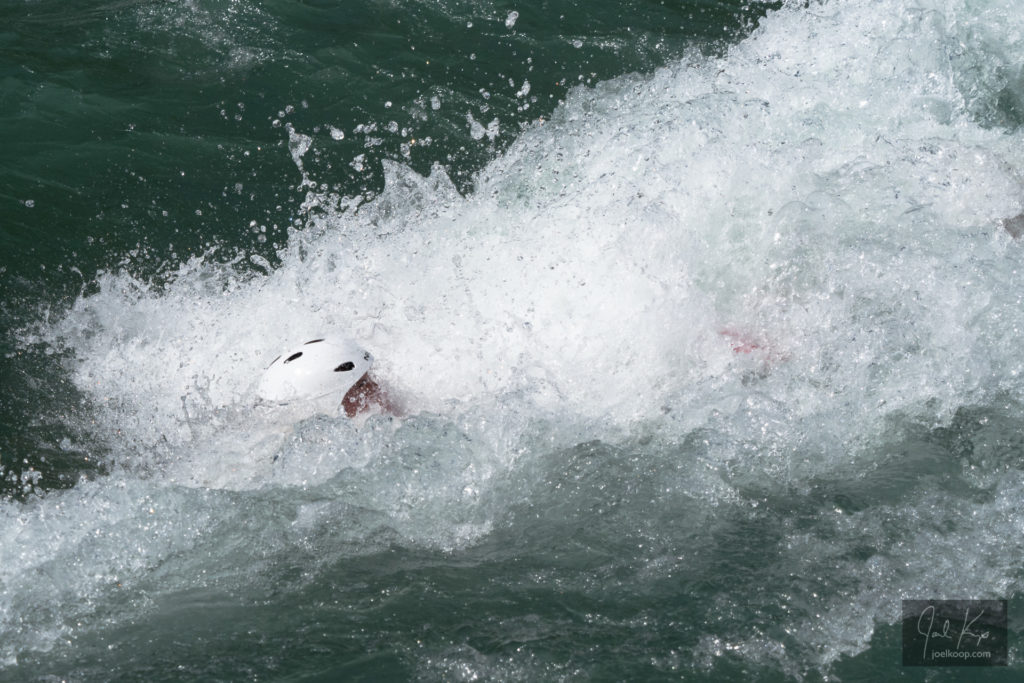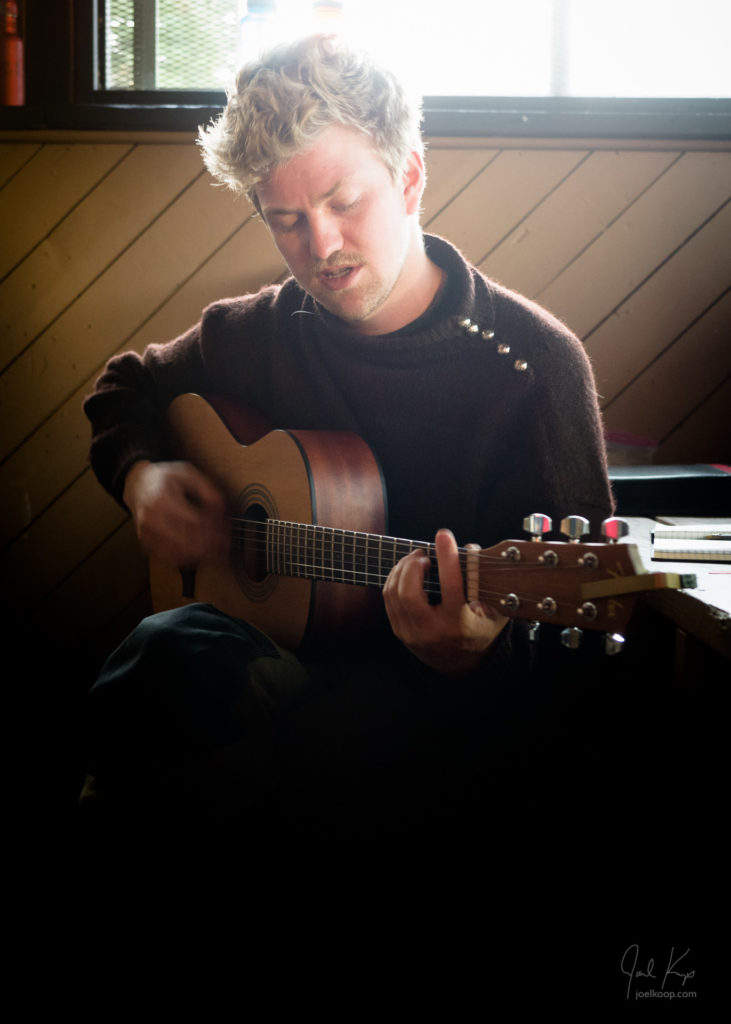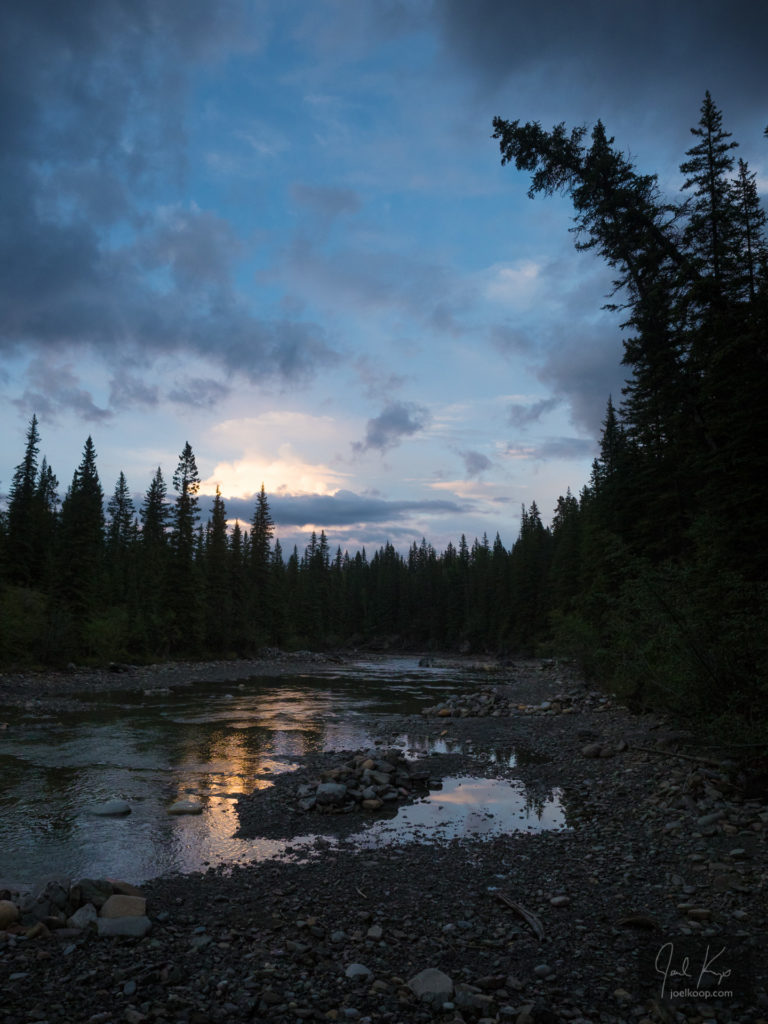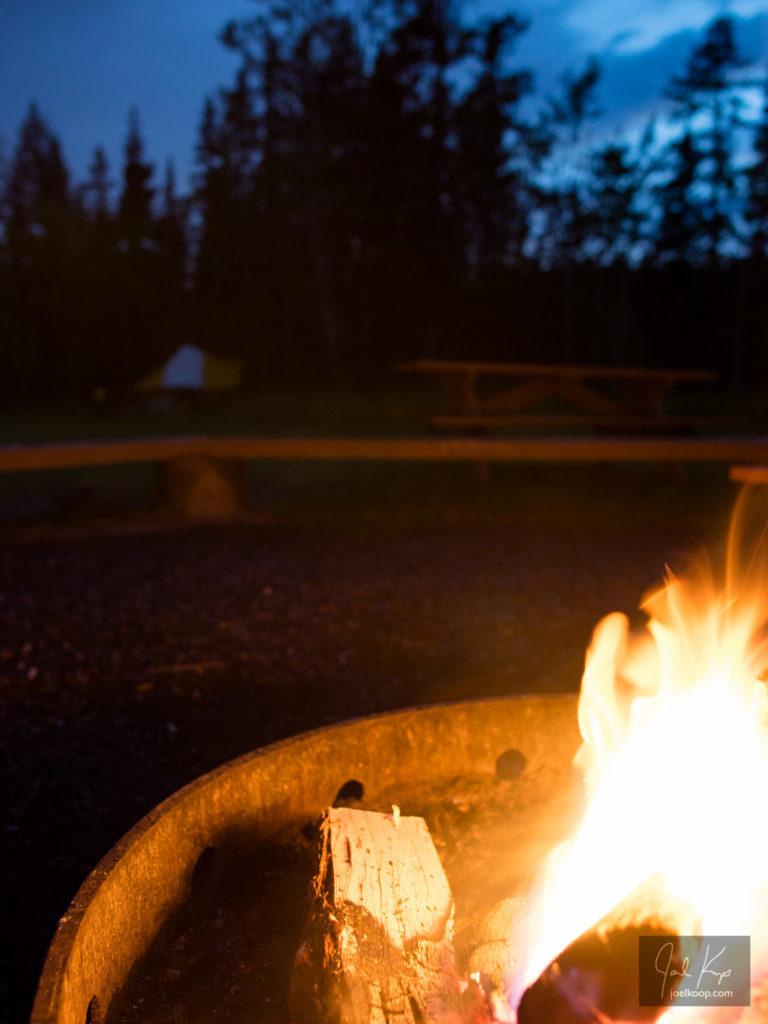During the first bit of August I was learning to be a better canoeist, canoe instructor, and whitewater rescuer. These were full, intense days mostly on the Kananaskis River. I’ve taken a Paddle Canada Moving Water course before, but it was a long time ago and even then my skills needed a lot of work. The skill development involved much ferrying (getting across the river without being pushed downstream) and many eddy turns and s-turns. Paddle Canada has changed some of their teaching methods recently so we learned the older PATS (Power, Angle, Tilt, Stroke) and got a taste of the newer MITH (Momentum, Initiate, Tilt, Hold) methods for eddy turns. I actually enjoyed seeing the difference between the two. I learned more by trying both than if I had just learned one. I’m sad they’re losing the angle of the canoe in the transition to MITH because I found that a very important factor to consider depending on the speed and angle of the current and where I wanted to end up. But the end result in either case is that you have to feel the canoe and water working together smoothly to get where you want to go. We worked on our form come rain or shine, on warm days and cold days.
We also did a quick trip down the river from Canoe Meadows to Seebe to work on our river reading skills and have a bit of fun. There was one hole where a few people dumped, but it was an easy self rescue as the river was pretty calm for a while downstream.
In the evenings we dried all the wet gear we could, made supper, washed dishes, filtered water, sometimes fixed and modified canoes, and then went to sleep in our tents in Canoe Meadows.
Some days we switched it up and did some whitewater rescue work. This involved a lot of throw bag practice, rope system figuring, and learning to swim in rapids. One evening, to practice our z-drags, we set up a 9-1 rope system to pull a Suburban across the field. This was good practice for our test of pulling a kayak loaded with rocks up a 30 foot cliff the next day. This was to simulate the amount of force needed to pull a canoe off a rock. Once in my life I’ve had the misfortune of being in a group where a canoe got wrapped. I didn’t know about z-drags then and I didn’t have the equipment with me anyway. After trying to move the canoe for half an hour, we ended up getting a tree to use as a lever and with three of us pulling on the tree we eventually pried it off the rock. Water flowing at a good speed is not something to be taken lightly.
Swimming was the most fun though (at least for the people whose drysuits were not leaking). The combination of defensive swimming, aggressive swimming, and rolling across eddy lines was a lot of work, a lot of fun, and really effective education. It did involve a fair number of bruised knees, ripped nails, and jammed fingers, but we all survived and had a blast.
Although it was rare, we occasionally got a chance to chill. These times were filled with music, walks along the river, and campfires.
It was hard for me to fit photography into this intense schedule. It was great practice for me to take pictures of people in action without being too distracted from the learning I had to do along with everyone else. But my normal practice of meditative photography was pretty much impossible. Since August I’ve had the opportunity to lead a canoe trip and do a bit of teaching. Although there was still a lot to do and a lot of interaction, I found a lot more time for photography while leading. Hopefully I’ll eventually get to that story here too.
